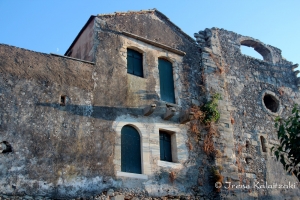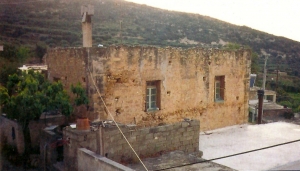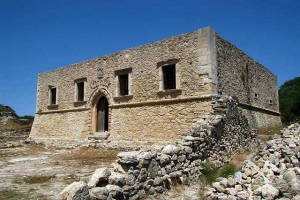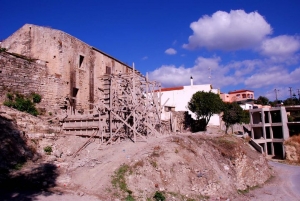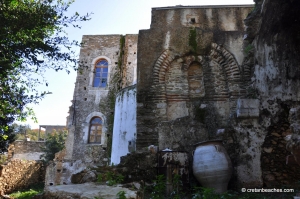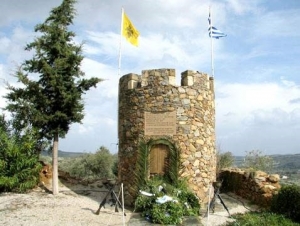Embrosneros hosted the chateau of one of the most terrible janissaries in Crete, the Turk Ibrahim Alidakis. Alidakis owned a vast property, which he had stolen from the Greeks, and became the greatest aga of the area. In the nearby plateau of Vothonas, Alidakis raised his horses.
Zou is a small green village located 7km south of Sitia. Its name probably derives from the Turkish word su, which means water, as water abounds here, flowing from the famous springs of Zou.
Etia is an deserted medieval village, located near Lithines of Sitia province, which in its heyday was the largest village of the area with more than 500 residents. It is worth strolling among the Venetian buildings of the village. Here in the late 15th century, the Venetian master Pietro Dei Mezzo, which was the feudal lord of the surrounding area, built the mansion De Mezzo, known as Villa De Mezzo or Seraglio.
The picturesque Venerato village, located 20km from Heraklion, was in the 16th-century the resort of the Venetian lords. It was so pleasant for them stay here, that they compared the village to Venice.
Agriolidis was a terrible janissary in Messara plain, who lived during the Greek revolutions of 1821. He resided in a 17th century chateau in the village of Agios Ioannis, near Phaestus, which still survives.
Although it cannot be classified as a defensive tower, however, it has prevailed with the name of Tower. The tower, which belonged to George and Francesco Modinos, still survives in very good condition. It is attached to the scenic old church of Panagia Rogdia.
The fort, according to a Turkish inscription on its outside walls, was built in 1740-1741. It was presumably founded by an Islamized Venetian nobleman who belonged to the family of Zeni, and was named Tsin Ali or Tzinalis. Tzinalis is a real historical person and was one of the toughest janissaries of Sitia.
Voukolies village is located at the 27th kilometer of the road Chania - Kandanos - Paleochora. It was initially a Turkish village and in 1866 the Turks, in order to consolidate their position, built a strong tower southwest of the village and within half a kilometer from Voukolies.











